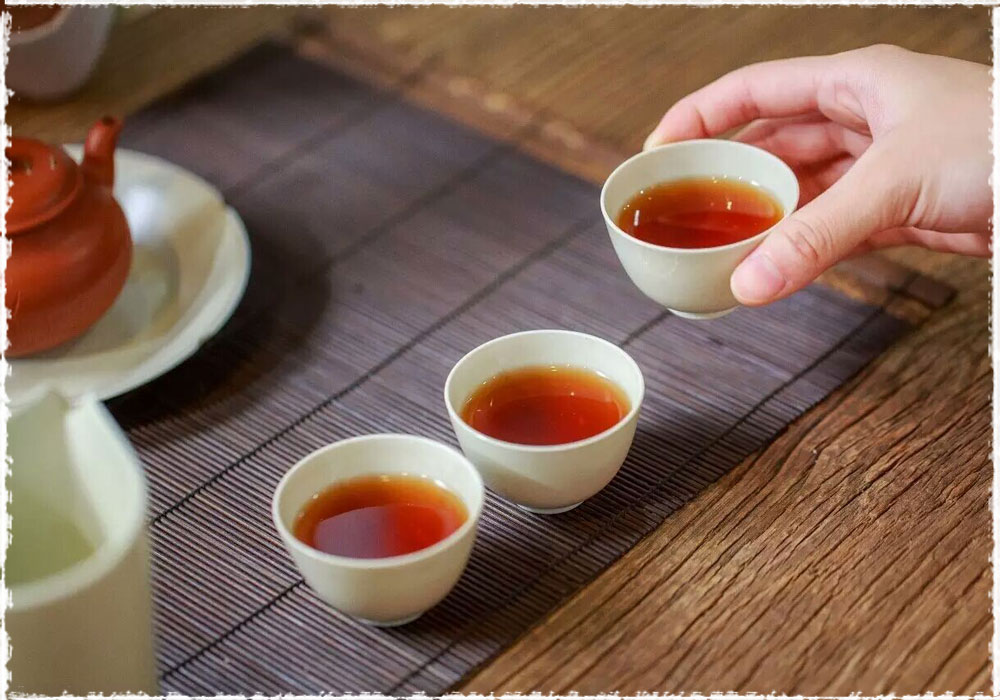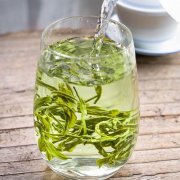The technological process of how black tea is processed illustrates the whole fermentation process of black tea.
Although there are many variables that affect the final taste of tea in the process of making tea, oxidation is arguably the most influential step. From the beginning of tea picking, with the rupture of the cell wall, oxidation occurs, and the enzymes in the tea are exposed to oxygen in the air. The tea begins to turn brown until it is heated, the active enzyme denaturates and maintains the required oxidation level in the finished tea.
The main types of tea we know today are mainly defined by their oxidation levels. Green tea is baked shortly after harvest to keep oxidation to a minimum. Different types of oolong tea belong to the medium range, while black tea is called "complete" oxidation, more than 80% brown. If several leaves are picked from the same plant and oxidized to different degrees, they will be divided into different categories, even though they are of the same variety, origin, or even picked on the same day.
Obviously, the most important stage of this process must have a significant impact on the flavor. But the effects of oxidation are difficult to isolate because the production methods are usually specific to each traditional area. If we taste the above hypothetical tea, which is picked from the same tea tree on the same day, but processed in different ways, what is the range of flavor we will find? What molecular changes have taken place in the process of oxidation that have such a profound impact on our taste? What makes some varieties and harvests more suitable for oxidation than others?
Taste factor
Most of the aroma and flavor of each cup of tea are made up of volatile compounds, which are extremely low in content and have endless combinations. These are usually responsible for floral and fruit flavors, but they are difficult to measure and quantify because they are so changeable. Instead, most studies have focused on the more tangible effects of non-volatile substances that affect tea flavor, such as amino acids, carbohydrates and polyphenols.
Amino acid
Tea contains a lot of amino acids, including l-theanine. L-theanine and caffeine work together to produce tea's unique "relaxation vigilance". In terms of taste, some amino acids contribute to the sweetness of the tea, while others add freshness, or "broth". During growth, under the influence of sunlight, amino acids are converted into catechin and other polyphenols, so teas with less sunlight retain higher levels of these ideal flavors. The villi on the spring buds of some varieties have been shown to contain unusually high levels of amino acids, providing extra flavor.

Carbohydrate
Carbohydrates are produced by tea trees and, as a form of energy, are produced in mature leaves, sent to the roots for storage during winter recuperation, and then restored in spring, providing power for the growth of new buds. Although they help to sweeten the new plant naturally, higher levels of bitter polyphenols in mature leaves are balanced by higher levels of bitter polyphenols.
Carbohydrates also contribute to the oxidation process after leaf harvest (3). Baking prevents oxidation and reduces the amount of bitter catechins, converting carbohydrates into soluble sugars, making mature leaves sweet (4).
Polyphenols
There are many different types of natural polyphenols in tea, but now we will focus on the best of them. Green tea contains catechins. Although they all contribute to many of the health benefits of tea, catechins also taste bitter and astringent (5). Green tea picking has medium levels of catechins early in the harvest season, with a lot of mature amino acid balance and rich flavor, although there are high levels of catechins in spring or summer after leaving, and there are fewer amino acids, the taste is more bitter and astringent.
Oxidation process
In the process of oxidation, catechins in freshly picked tea are converted into new polyphenols-mainly theaflavins and lycopene. These compounds help oxidize the dark color of tea, but they also contribute to flavor. Catechins are generally considered bitter, while theaflavins and theaflavins are astringent rather than bitter. Theaflavins are especially associated with "rich" flavors.
It is estimated that about 10% of the catechins in tea become theaflavins, while nearly 90% of the catechins become thearubin. The higher the content of catechins in fresh leaves, the higher the content of theaflavins and the stronger the flavor. This is important because amino acids degrade during oxidation, causing dark tea to lose the flavor characteristics of high-quality green tea.
Degree of oxidation and fermentation
One study used Tieguanyin, a classic oolong tea, to compare teas with different levels of oxidation. According to the flavor analysis of six different attributes, it was found that the low oxidation level increased the taste of natural sweetness, flower aroma and "green fruit". With further oxidation, lower levels of catechins and higher levels of theaflavins led to an increase in astringency, but a decrease in bitterness.
The oxidized leaves of this black tea are less floral and more fruity.
These findings are confirmed by our own tea experience, such as our unusual oriental tea, black tea made from a variety of oolong tea, or our new craft white tea, which contains white tea leaves that are more like oolong tea oxidation. Although both teas lack the freshness of traditionally made teas, they make up for their rich flavor with more obvious fruit tones.
Finally, oxidation does not determine the quality of tea, but it plays an important role in the formation of flavor characteristics. Understanding how taste changes in the process can help us understand our sense of taste and give meaning and sound to our personal preferences. Most importantly, it allows us to better appreciate the endless complexity of tea and the many ways in which a piece of tea changes before it enters our cups.
Important Notice :
前街咖啡 FrontStreet Coffee has moved to new addredd:
FrontStreet Coffee Address: 315,Donghua East Road,GuangZhou
Tel:020 38364473
- Prev

Detailed introduction of the method of Variety treatment in African Ugandan Coffee producing areas
African Ugandan coffee Ugandan coffee beans have a unique flavor of delicate taste, which is very suitable for making Italian and other flavors of coffee. Coffee is the largest crop in Uganda. About 500000 coffee farms are engaged in coffee-related agriculture, accounting for 25% of the total population. Coffee trees are mostly robusta coffee trees with strong growth, which accounts for about 94% of coffee cultivation in Uganda. Only 6%
- Next

How to deal with the aroma of black tea? how to ferment and produce floral aroma? several methods of extracting fragrance from tea.
We often discuss the importance of harvest date in determining the quality of tea, with emphasis on spring harvest, especially lightly oxidized tea. In fact, the impact of the harvest date is inseparable from another quality signal that is easier to see in finished tea: picking standards. Tea harvested in spring is very precious, especially green and white tea, because they include the most tender leaf buds and the middle of the year.
Related
- Beginners will see the "Coffee pull flower" guide!
- What is the difference between ice blog purified milk and ordinary milk coffee?
- Why is the Philippines the largest producer of crops in Liberia?
- For coffee extraction, should the fine powder be retained?
- How does extracted espresso fill pressed powder? How much strength does it take to press the powder?
- How to make jasmine cold extract coffee? Is the jasmine + latte good?
- Will this little toy really make the coffee taste better? How does Lily Drip affect coffee extraction?
- Will the action of slapping the filter cup also affect coffee extraction?
- What's the difference between powder-to-water ratio and powder-to-liquid ratio?
- What is the Ethiopian local species? What does it have to do with Heirloom native species?

